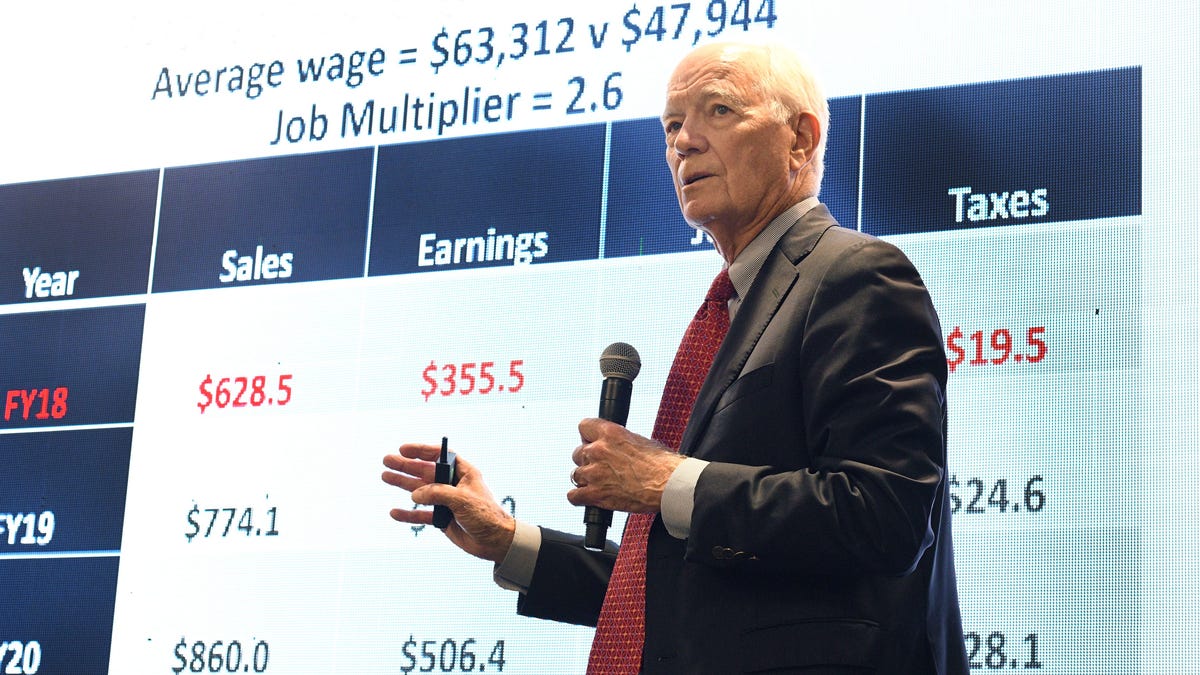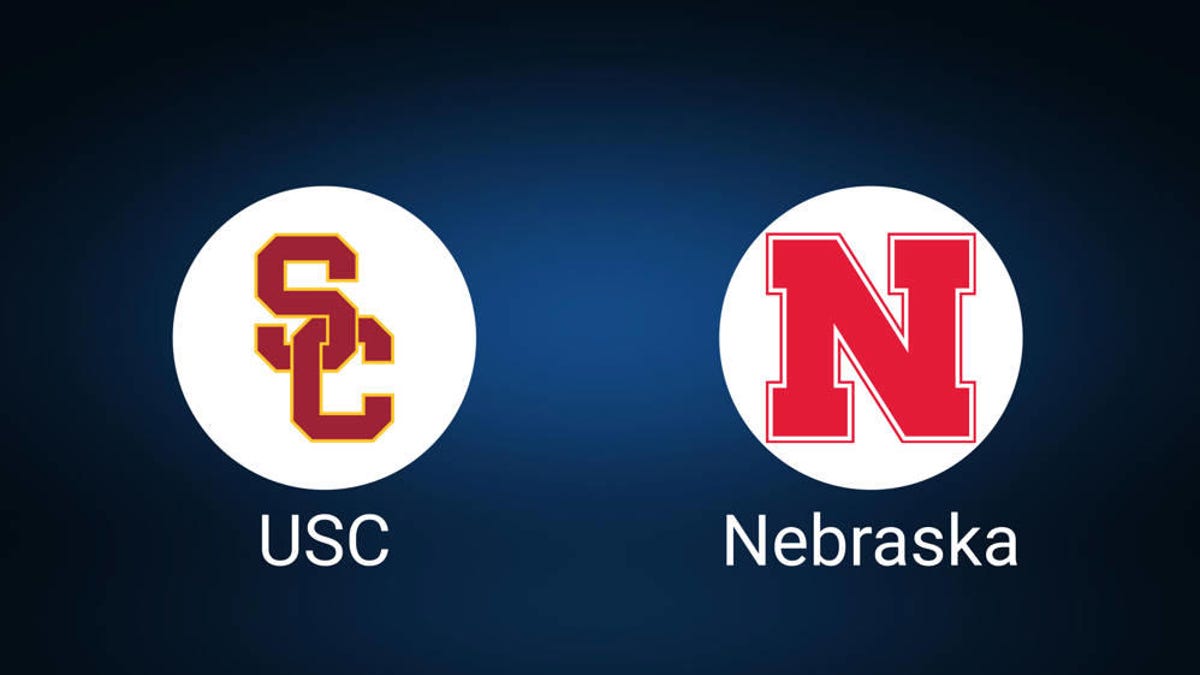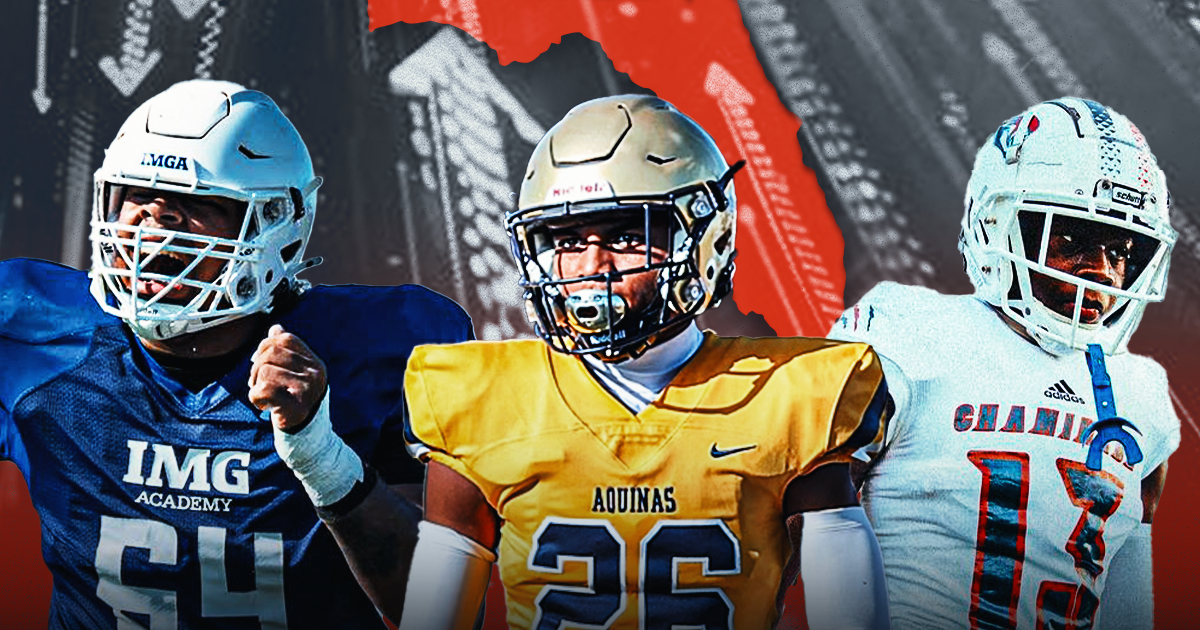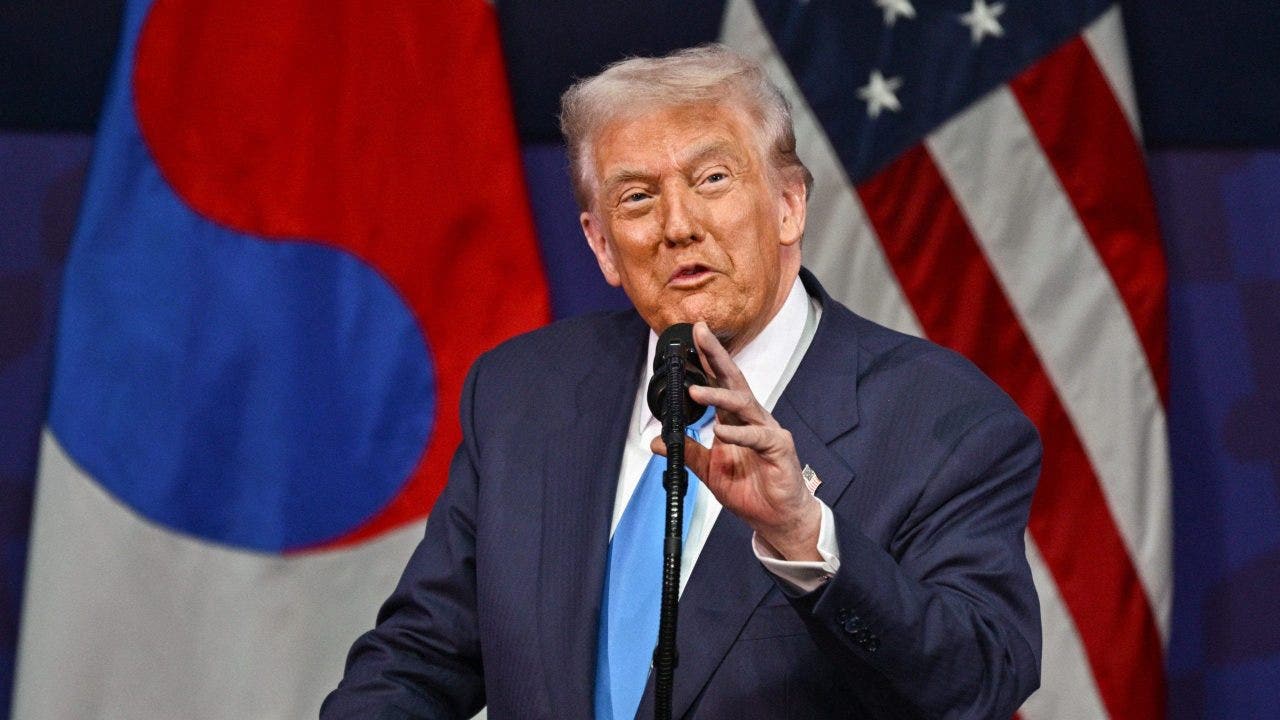A lot has happened since John Sherman, principal owner of the Kansas City Royals franchise, first floated the idea of a new stadium in November of 2021. The road since then has been winding and frustrating, and four years and one failed vote later and we don’t know where the stadium is going or what it will look like.
Kansas
Kansas Republicans send flat tax bill to Laura Kelly for likely veto. Can they override it?
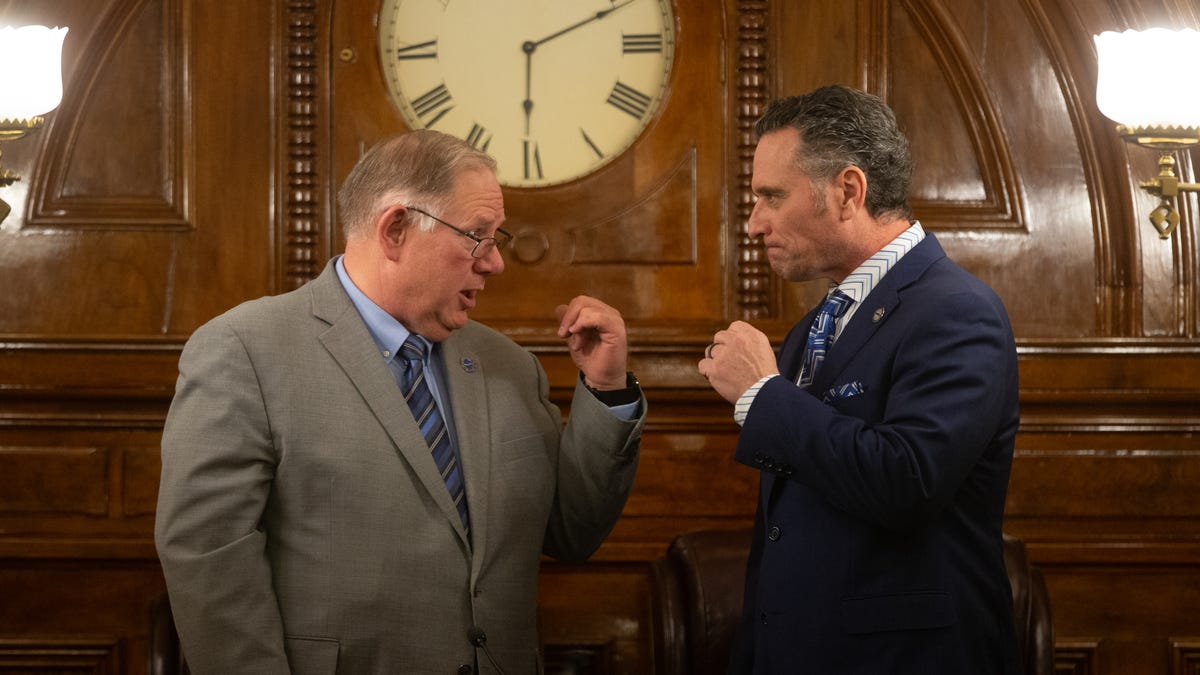
Kansas Republicans got to work quickly on tax cuts this session, fast-tracking a package and sending it to the governor before the end of the second week.
But their efforts could be doomed by an expected veto from Democratic Gov. Laura Kelly and a likely inability to override that veto.
Republicans gutted House Bill 2284 in a conference committee and inserted in several tax policies, the biggest of which is a 5.25% single rate income tax, also known as a flat tax. That provision accounts for $706.6 million of the $1.59 billion in tax cuts over the next three fiscal years.
Kelly has vowed to never sign a flat tax into law, meaning the bundling of other income, property and sales tax relief could all be lost.
Who benefits from the tax plan?
Democrats argued that the flat tax amounts to a redistribution of wealth back to the highest earners, and that middle-income people would gain the least from the proposed changes to the tax code.
Rep. Adam Smith, R-Weskan, didn’t dispute that higher earners will get more, but said that it’s proportional to what is put in.
“I would argue that a single rate tax policy is fair,” Smith said. “It treats everyone proportionately. If you make twice as much income, you pay twice as much tax.”
He also pointed to the hundreds of thousands of Kansans who wouldn’t pay any tax with the removal of a “cliff,” referring to a threshold at which all wages would be subject to a certain tax rate. The plan that passed wouldn’t tax income under the $6,150 threshold for individuals or $12,300 for couples.
Americans for Prosperity-Kansas has been a major proponent of the flat tax, promoting it with a statewide campaign keynoted by Senate President Ty Masterson, R-Andover, and House Speaker Dan Hawkins, R-Wichita.
In a sponsored Facebook post paid for by Americans for Prosperity, AFP-Kansas said “switching to a single-rate tax system means an extra $400 in your pocket yearly.”
Past Kansas Department of Revenue estimates show $400 in annual savings don’t kick in under a 5.25% flat tax until around when individuals earn $125,000 or more, childless couples earn $175,000 or more and couples with two kids earn $175,000 or more.
The outlook for people earning a more typical Kansas wage is less optimistic.
Though every earner in Kansas is due for a cut, Rep. Tom Sawyer, D-Wichita, said more than half of the $260 million in tax relief Kansans will receive will go to the 48,000 filers earning more than $250,000. About $40 million in income relief from the tax cuts will go to out-of-state residents.
“The people making between $50,000 and $100,000 get $20 million out of the $300 million,” Sawyer said. “That’s the big middle, the people in Kansas that work hard and pay their taxes. There are 300,000 people in that group.”
Sen. Alicia Straub, R-Ellinwood, raised similar concerns in a Senate GOP caucus as she held up a graph on effective tax rate that was prepared by nonpartisan legislative staff.
“I’m just showing where the effect of this tax rate reduction, who it benefits the most,” Straub said, pointing to where the chart showed middle income earners would see nearly no benefit but higher and lower income earners see more benefit.
“That’s where the benefit actually of the single rate starts to take effect, is if you have an adjusted gross income of $70,000 to $80,000 or higher,” she said. “Otherwise … if you’re making between $40,000 and let’s just say $75,000, you’re essentially paying the same amount in income tax next year if this were to take effect.”
Sen. Caryn Tyson, R-Parker, acknowledged that “yes, there is a middle income that the effective tax rate is like tenths of a percent difference between this and current policy.” But she argued that such people would get the benefit of other pieces of the tax plan, including an inflation index for the standard deduction and personal exemption.
“The bottom line is … this is a tax cut for everyone,” she said. “I would hate to go home to my constituency and say I did not support this.”
Tyson reminded her colleagues that popular tax cuts like the property and sales tax pieces would be lost if the bill does not pass.
“You can look at just one target of this and pick on that part of the bill, but the overall bill is great policy for the average Kansas family,” she said.
People with middle incomes could benefit from other provisions in the bill.
Tying the standard deductions to the Consumer Price Index will guard Kansans from their standard deductions losing value, but will keep rates at pace with adjusted real dollars. And Kansans who have at least one dependent would see an additional $50 plus inflation adjustments in tax exemptions per dependent due to the bill.
Seniors who make over $75,000 in income will no longer have to pay income tax on their Social Security benefits.
Residential property owners will see their state property tax exemptions more than double from just over $42,000 to $100,000.
All Kansans would see their spending on groceries reduced with the final axing of the state sales tax on food that would start in April 1, rather than the currently scheduled Jan. 1, 2025.
Kansas budget would hit a deficit after five years of Republican tax plan
Kelly has said she wants tax cuts to be both “fiscally responsible” and “sustainable.”
Democrats have framed the Republican proposal as a return to Brownback-era instability. Republicans, however, maintain that the cuts are feasible.
“This is completely sustainable, we’ve got billions of dollars and a rainy day fund, and it pencils out,” Masterson said. “There’s absolutely no reason not to return these resources to the people we serve.”
Projections from the Kansas Division of the Budget suggest otherwise.
Under the budget division’s projections, HB 2284 would cut into the state general fund balance more than the governor’s tax plan.
“This is good policy; it is a bigger tax savings than the governor’s,” Tyson said.
By fiscal year 2027, the budget would no longer comply with a state law requiring a minimum ending balance, according to the Division of the Budget. By fiscal year 2029, the general fund would see a $514.6 million deficit.
More: A $15 minimum wage for state employees? Here’s what to know about Kansas budget proposals
Republicans don’t have a supermajority at this point
The Senate voted 25-11 on Wednesday on HB 2284. A supermajority is 27 votes out of 40 senators.
The House voted 81-37 on Thursday. A supermajority is 84 of 125 representatives.
The Senate is where Republicans have a problem.
More: Kansas Republicans are fast-tracking tax cuts, despite not having veto-proof majorities
Sens. Rob Olson, R-Olathe, and Dennis Pyle, a conservative independent from Hiawatha, both voted “no.” Absent was Sen. John Doll, R-Garden City, who has previously voted against a flat tax.
Republicans would need one of them to flip-flop while not losing the support of Sens. Straub and Carolyn McGinn, R-Sedgwick. Both voted “yes” this time around, but have previously waivered in their support.
While the House fell short of 84 “yes” votes on the bill, Republicans were missing four absent representatives who have previously voted in favor of a flat tax. As long as at least three of those four show up for a veto override and no one else flip-flops, House Republicans have a supermajority.
Rep. David Younger, R-Ulysses, was the only Republican to side with Democrats. Rep. Marvin Robinson, D-Kansas City, was the only Democrat to side with Republicans. Robinson has a track record of siding with Republicans on controversial votes, including veto overrides.
Will Republicans claim compromise or take credit?
Republicans have claimed that their tax package is a compromise with the governor and that the Kelly’s proposal was comprised of Republican ideas.
“Social Security (relief) has been around for a long time, property tax relief was in our bills we’re just arguing about the levels of it, those are all ideas that have percolated through the Republican Party,” Masterson said after Kelly’s State of the State speech.
Masterson and Hawkins have both referred to it as “our compromise plan” and said they “are hopeful the governor will meet us in the middle,” despite Kelly promising to never sign a flat tax into law.
Kelly has been sharing a similar message on her package of tax cuts, often touting that it is bipartisan. Olson and Pyle signed onto the governor’s proposal and voted against the Republican plan. Doll also co-sponsored Kelly’s plan but was absent during the vote on Wednesday.
Sen. Jeff Longbine, R-Emporia, asked how Republicans should be messaging to constituents on the bill.
“It is an election year, and it is really, really hard to outmessage the governor,” he said.
More: Here’s how $1M fundraising haul of Laura Kelly’s PAC could break supermajority in Kansas
Masterson said the message should include that the plan is a “compromise,” because many of the pieces are ones Kelly has publicly supported.
“We gave her a lot of stuff in this legislation,” Tyson said of the governor.
But some Republicans also want to take credit for it all.
“For the record, all these ideas came from this Legislature,” said Sen. Chase Blasi, R-Wichita. “It wasn’t Laura Kelly’s. None of these ideas are Laura Kelly’s. Property tax cuts, food sales tax, child care tax cuts, they’re all Republican policies.”
Legislative process was criticized
Republicans fast-tracked the bill, setting the Legislature up for atypical early session floor debates on final action on substantive policy. The bill passed through a conference committee, which doesn’t allow legislators to amend the text and limits terms of debate of the floor.
It also meant there were no committee meetings where the public could comment.
Pyle raised concern at the process, calling it a “gotcha bill” and likening it to leading sheep to slaughter.
“I wish I could propose today to motion to suspend the rules then divide this conference committee report and vote on it individually. That’s part of the problem, it’s put into a conference committee report for a reason,” Pyle said.
Sen. Marci Francisco, D-Lawrence, said she that she supports some of the proposals in the bill, but is troubled by the inability to amend the text and that it leaves no time to gauge how her constituents feel about it. Tyson defended the process by saying many of the ideas have been pushed around the Legislature for several years.
What’s in the tax cut plan
- A 5.25% flat tax on all earnings over $6,150 for individuals or $12,300 for married couples.
- Indexing the standard deduction to increase with inflation.
- An additional $50 to the $2,250 personal exemption tax credit per dependent plus an inflation index.
- Eliminating income taxes on Social Security benefits.
- Exempting the first $100,000 from state property taxes.
- Ending all state sales tax on food in July rather than January.
- Cutting the privilege tax on banking and financial institutions.

Kansas
The North Kansas City stadium site might just be the best one

But there is a light at the end of the tunnel. The Royals’ lease with the Truman Sports Complex ends after the 2030 season, which means they have to start on construction relatively soon to be ready by the 2031 season. Missouri and Kansas have both passed state-level funding. And the Royals had planned on announcing their final plan earlier this year, which implies they are close to an answer themselves.
Lately, there has been a lot of smoke surrounding the North Kansas City option. The office of NKC mayor Jesse Smith put out a press release on October 16 stating that:
The City of North Kansas City continues to have conversations with the Kansas City Royals regarding the possibility of a stadium and related development in North Kansas City. These discussions are substantial and will ultimately involve collaboration among the State of Missouri, Clay County, and the City in any final framework.
Additionally, the Missouri legislature had previously passed a bill that allows Clay County to create a sports complex authority that would govern the stadium. And we can’t forget that North Kansas City was one of two initial proposed sites by the Royals back in August 2023.
Like many folks, my reaction to the proposed Clay County site was one of skepticism. What was the point? To just leave a suburban area to go to another suburban area? Why not just stay in Kauffman Stadium?
I have since come around, and not because I am being paid off by the Royals. I have no idea what they’re doing and they have declined to comment on media requests about the stadium for a while now. No; I genuinely think that the North Kansas City site is the best one outside the East Village site, which seems dead. Let’s dig into why.
The Royals’ new stadium goals
So much has happened that it’s worth re-visiting the first real piece of official communication the Royals put into the world: an open letter from Sherman about what the Royals wanted to accomplish.
There are two things that stand out as clear benchmarks for what the Royals wanted the stadium to be from the very start of this project. First, though downtown was the primary goal, the Royals were cognizant that there were other sites that could work. They were pursuing sites “both in downtown Kansas City and close to it.”
Second, and most importantly, the Royals wanted to build a ballpark district, with “residential, commercial, and community components.” As Sherman wrote, their version was to construct “a new ballpark district and all that comes with it – one that is woven into the fabric of our city, can host events and concerts, and boosts our local economy.”
Why North Kansas City works
Kauffman Stadium is a beautiful park that exists within an ugly car dystopia that sucks the life out of the entire area. It’s surrounded by acres and acres of useless concrete. It’s cut off from goods, services, housing, and lodging. It is an unwalkable island wasteland.
Contrast that with walkable areas, where you don’t have to drive a car to get to where you want to go. More importantly, there are people already there. People live in walkable areas in multiunit apartments and condos, and walkable areas have narrower streets, more public transit, and a significantly higher density of resources and services than car-centric areas.
Downtowns are usually the only areas in American cities that have walkability and density. But suburbs can be walkable, too. Consider the area around Johnson Drive and Lamar in Mission, Kansas, versus the area around 119th Street and Strang Line Road in Olathe. Both Kansas City suburbs, but one is significantly prettier, more lively, and livable than the other.
North Kansas City is one of the only areas in the metro that has the ingredients for significant walkability. Indeed, the Armour Road area is already walkable and bikeable.
The above screenshot of Google Maps shows roughly where the Royals have proposed their site: bordered by Armour Road on the north and 16th Avenue on the south, and from Erie Street on the west to Howell Street on the east. North of Armour Road, there are rows and rows of houses, a public library, North Kansas City High School, and multiple new apartment complexes.
Add the streetcar into the equation, and the area quickly becomes an opportunity to transform into the type of urban neighborhood that is a destination. RideKC has already created an extensive and recent study of what an extension would look like up to North Kansas City, and their plan is to extend the line over the Heart of America Bridge and then up Swift Street.
And though walkability is key, car access is still easy. I-35 is immediately to the east, and there’s access to I-29, I-635, and Highway 169—along with access to downtown and I-70 via Highway 9.
So why wasn’t NKC the first choice?
No site is perfect, which I’m sure the Royals have grappled with significantly.
At the same time, there are some pretty big reasons why downtown is a better option than North Kansas City. One is population; the downtown KC population is about 32,000 people, compared to under 5,000 people in NKC as of the 2020 census. Furthermore, Jackson County has over two and a half times as many residents as Clay County, which is a significant difference when it comes to tax revenue and the inevitable “public” part of the “public-private partnership” that the Royals want.
And, of course, that streetcar thing? It’s already downtown.
But at this point in the juncture, North Kansas City is also the only place that fulfills all of the Royals’ initial desires for the project. The Washington Square Park site downtown is tiny and there is not space for a “ballpark village.” No site in Johnson County or Wyandotte County makes much sense for that, either, and a Legends site would end up as Kauffman Stadium West (derogatory).
If the Royals aren’t going to pull the trigger on the East Village site—which has always been the best choice—for whatever reason, North Kansas City provides a way to catalyze some public transit investment and transform the area into something the Royals can be proud of.
At least, if the public isn’t on the hook for too much money. But that, as they say, is a whole different ball game.
Kansas
Additional Light Shed on Simmons Timeline, Past and Future
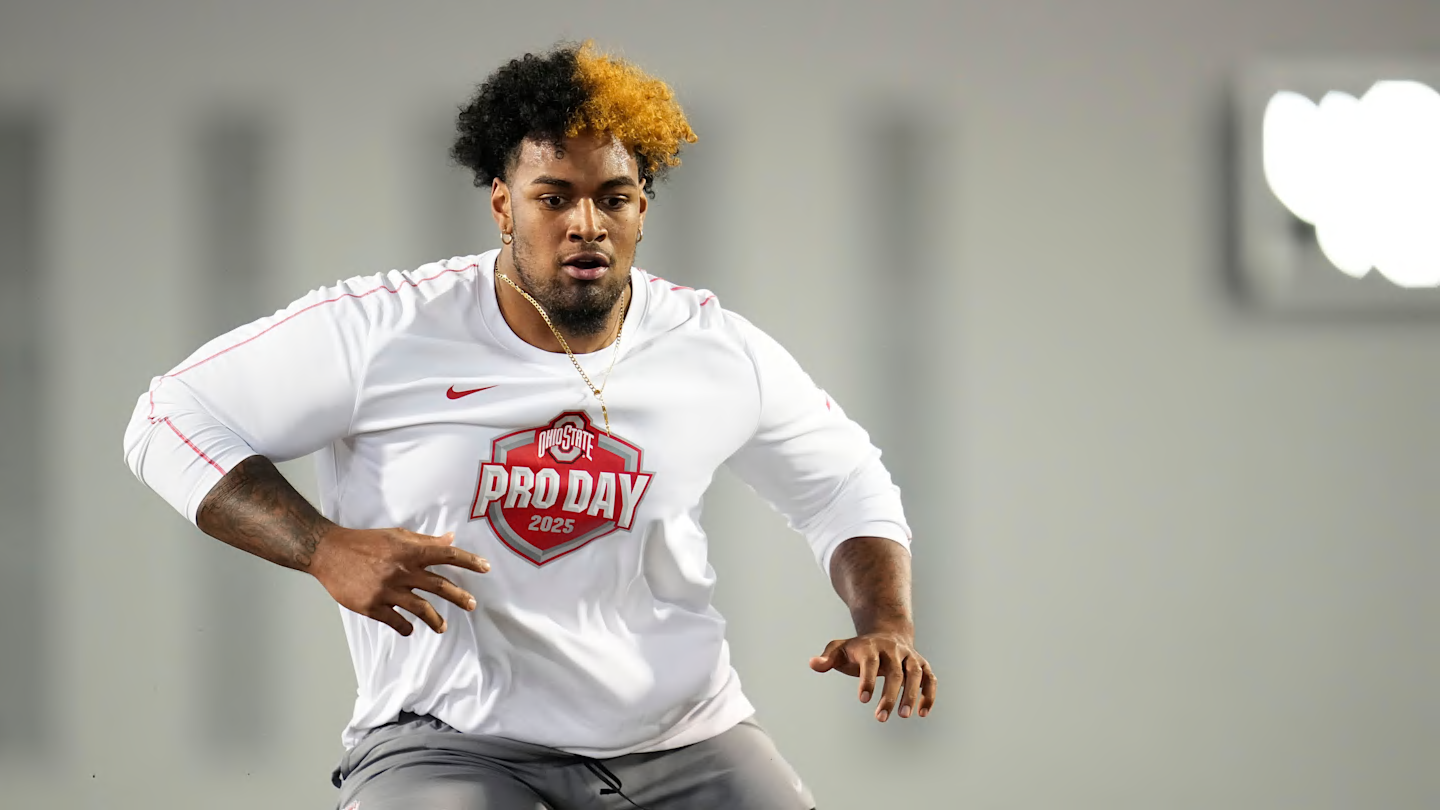
KANSAS CITY, Mo. – The Chiefs pulled away in the second half to secure an impressive Monday night win over the Commanders. But their prior Monday night game actually began the Josh Simmons timeline.
According to SI insider Albert Breer, the deeply personal family issues with which the rookie is currently navigating first surfaced just before the Oct. 6 Monday night loss in Jacksonville. Shortly before kickoff in that game and after pregame warmups, the Chiefs announced that Simmons had been added to the injury report as questionable with an illness.
A 6-5, 310-pound rookie, Simmons wound up starting and playing the full game, a 31-28 loss to the Jaguars. He didn’t appear on the team’s injury report the following week until five hours prior to kickoff in the Sunday night victory over Detroit on Oct. 12.
That’s when the Chiefs announced Simmons – the final choice in the first round of April’s draft — as questionable for personal reasons. Kansas City ruled him out before kickoff, and Jaylon Moore has started each of the last three games, all Chiefs wins.
Money well spent
“For now,” Breer wrote Tuesday, “the first thing to know is the two-year, $30 million deal the Chiefs gave Jaylon Moore in the offseason, even if he’s not the starting left tackle they paid him to be, is money well spent.
“The Chiefs have depth at those positions that they didn’t before. Last year, a black hole at left tackle forced the team to move Joe Thuney there, setting off a cascade that blew up in the team’s Super Bowl loss. They’ll likely have no such problem this year.”
Chairman and CEO Clark Hunt addressed the Simmons situation prior to Monday’s win over the Commanders.
“It’s not something I can go into but it is a private family matter,” Hunt said Monday, noting he has a high level of confidence Simmons will return. “And we’ve had good communication with him, and there’s an understanding by both parties where he is. And we’re hopeful to have him back with the team sometime in the future.”
A good sign
Breer also noted that if Brett Veach and Andy Reid expected a long-term absence, they had the option to place the rookie on a reserve list, shelving him for at least four games. But the team is not believed to be considering that choice.
While Moore played well his first two starts in place of Simmons, the veteran tackle struggled against the Commanders. Reid said after Monday’s game that Washington has an elite defensive front. Edge rusher Jacob Martin sacked Patrick Mahomes twice, one allowed by Moore.
“They’re better with the wildly talented Simmons in there,” Breer wrote. “What I know is that the issue first arose just before the Jaguars game. Simmons ended up playing in that matchup, then left right before the Lions game. The cited family aspect of his absence is real, and that was a part of the background that teams had to work through when he was coming out.”
The Chiefs (5-3) have to travel to Buffalo (5-2) on a short week, then get a midseason bye.
Chiefs Kingdom, keep that browser right here for your best in-depth news and info, totally free; the best way to get it is to follow @KCChiefsOnSI, @ZakSGilbert and @Domminchella on X (Twitter). And tell us your thoughts on the Chiefs’ offensive line by visiting our Facebook page (here).
Kansas
So, Is Taylor Swift Styling a Chiefs vs. Commanders Outfit Tonight?
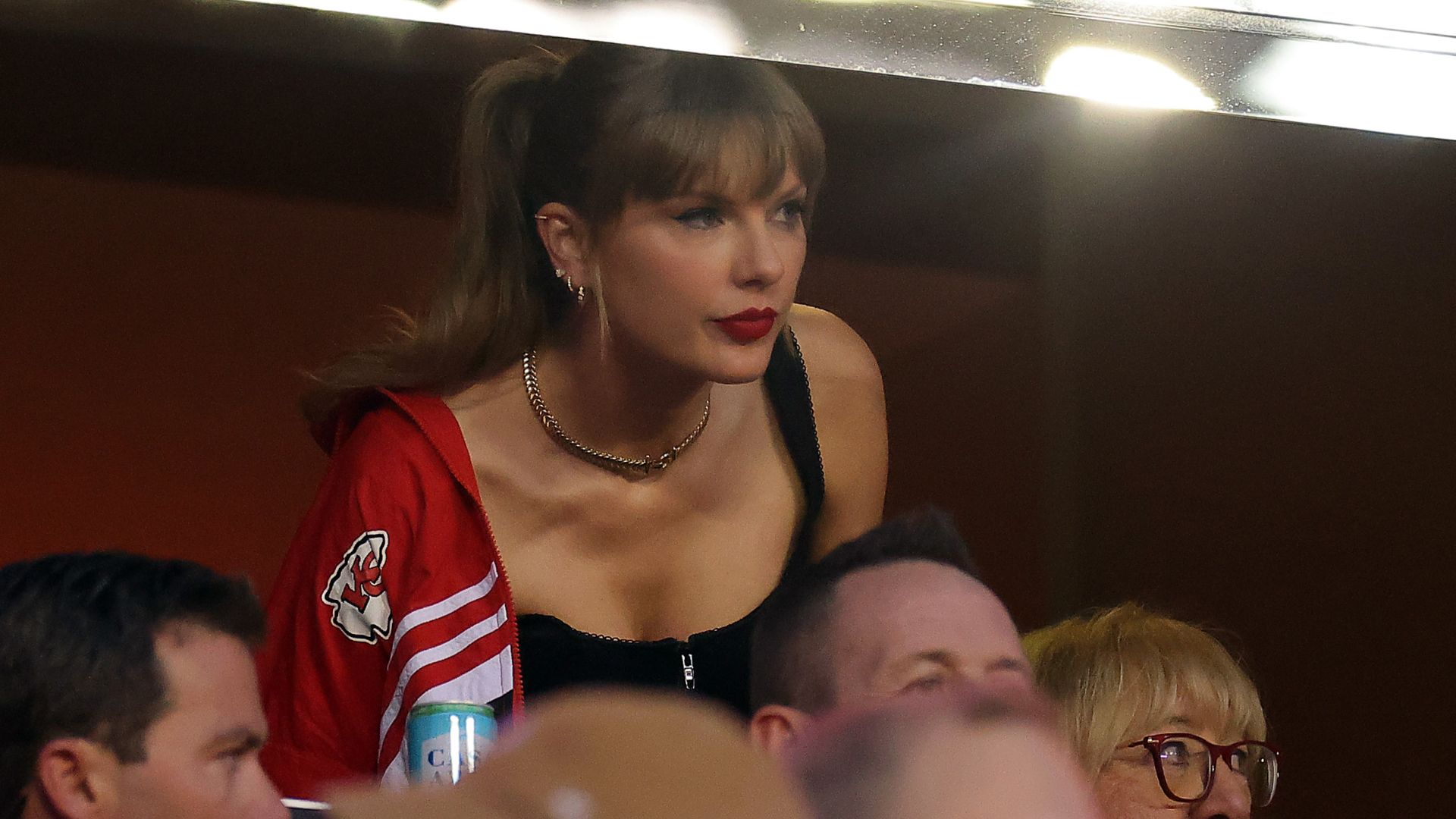
At 8:15 p.m. ET on October 27, Monday Night Football viewers weren’t one hundred percent focused on the field where the Kansas City Chiefs faced the Washington Commanders. They were scanning the stands for a glimpse at Taylor Swift’s game-night outfit.
Last week, when the Chiefs played the Las Vegas Raiders, Taylor Swift spent the night at Arrowhead Stadium largely unnoticed. Her look for the evening—a Chanel 25 bag, Prada corset, short shorts, and her diamond engagement ring by Artifex Fine—was only revealed during a post-game trip to 1587 Prime with fiancé Travis Kelce.
This week, the “Opalite” singer’s play is still unpredictable. While Kelce made his tunnel walk before the game in a Showgirl orange chore jacket and pants, Swift’s own Chiefs vs. Commanders outfit remained under wraps.
Travis Kelce took the traditional tunnel walk to the locker room for the Kansas City Chiefs vs. Washington Commanders game. Taylor Swift was not seen before the game.
(Image credit: Getty Images)
By the end of the first quarter, reports from Arrowhead Stadium said Swift’s attendance hadn’t yet been confirmed. No vintage Chiefs jackets, no glitter freckles, no Joseph Cassell Falconer styling, no sighting of the singer, period. There’s a chance that she is attending the game but remaining off-screen. If Swift does make an appearance, or hits 1587 Prime after the ref blows the final whistle, Marie Claire editors will update this story with all the details.
Last season, Taylor Swift made several stops by the Arrowhead Stadium tunnel in Chiefs-centric fashion. (Image credit: Getty Images)

This NFL season, spotting Taylor Swift’s Kansas City Chiefs game-day outfits has seemed harder than a reversing a twenty-point loss with two minutes left in the game. For the Chiefs vs. Detroit Lions, Swift’s Ganni jersey dress was identified only by a snippet of its custom stitching shown on the nighttime broadcast. The singer appeared to skip the Chiefs vs. Philadelphia Eagles game altogether—until a friend of Swift’s and Kelce’s shared photos of her plaid Jonathan Simkhai set, Chanel necklace, and Gucci slingback heels following the match. Even the season opener, against the Los Angeles Chargers, went by Swift-less. (However, the singer had a valid excuse to skip an outfit: The game was held in Brazil.)
Taylor Swift has skipped tunnel walks this NFL season, instead making quiet appearances with friends following the Chiefs’ games.
(Image credit: @kanebrown)

Instead, Taylor Swift’s Life of a Showgirl style has taken up all her center-stage photo ops this October. The singer made a quick press circuit through London and New York City in the lead-up to her album’s release, stopping by Late Night’s couch in Wiederhoeft and The Tonight Show‘s interview in a Giuseppe Di Morabito mesh dress. The only snapshot of her everyday style arrived at an Oct. 8 dinner, when she wore a fall plaid mini skirt and knee-high boots to visit New York City’s Eighty Six.

Taylor Swift wearing Wiederhoeft to Late Night with Seth Meyers.
(Image credit: Getty Images)
Taylor Swift’s tunnel walks at Arrowhead Stadium have been missed. Between her first two seasons, more than 30 Kansas City Chiefs game outfits received their own red carpet treatment: dedicated photo sessions where style experts could catalogue Swift’s Chiefs-colored Vivienne Westwood sets, her head-to-toe Chanel runway pulls, and her Dior saddle bags.
The Kansas City Chiefs vs. Washington Commanders game was scoreless by the start of the second quarter. So was the tally where Swifties track the singer’s Chiefs outfits. But there’s still time on the clock—and a peek at her outfit is better than none at all.
This is a developing story. Marie Claire will provide updates on Taylor Swift’s Kansas City Chiefs vs. Washington Commanders game look when they are available.
-

 New York6 days ago
New York6 days agoVideo: How Mamdani Has Evolved in the Mayoral Race
-

 World1 week ago
World1 week agoIsrael continues deadly Gaza truce breaches as US seeks to strengthen deal
-

 News1 week ago
News1 week agoVideo: Federal Agents Detain Man During New York City Raid
-

 News1 week ago
News1 week agoBooks about race and gender to be returned to school libraries on some military bases
-

 Technology1 week ago
Technology1 week agoAI girlfriend apps leak millions of private chats
-

 Politics1 week ago
Politics1 week agoTrump admin on pace to shatter deportation record by end of first year: ‘Just the beginning’
-

 News1 week ago
News1 week agoTrump news at a glance: president can send national guard to Portland, for now
-

 Business1 week ago
Business1 week agoUnionized baristas want Olympics to drop Starbucks as its ‘official coffee partner’


